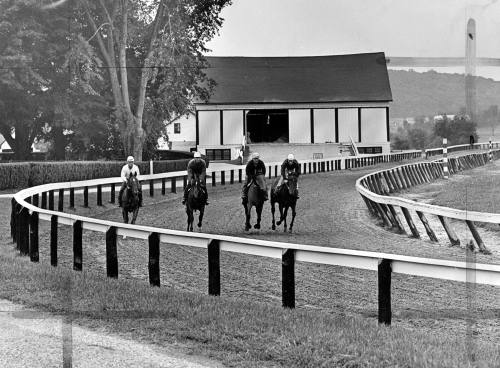A. Aubrey Bodine's Legacy Captured in 'Race Horse Workout (1967)'

Summary
Full Article
The photograph 'Race Horse Workout (1967)' by A. Aubrey Bodine offers a glimpse into the serene yet dynamic world of racehorse training at Merryland Farm in Hydes, Maryland. This image, part of Bodine's extensive portfolio, showcases his unique ability to blend documentary photography with artistic expression, a hallmark of his celebrated career.
A. Aubrey Bodine, recognized as one of the twentieth century's finest pictorialists, began his photographic journey in 1923 with the Baltimore Sunday Sun. His work, characterized by exceptional quality and artistic design, transcended the conventional boundaries of newspaper photography. Bodine's dedication to his craft was evident in his innovative techniques, including manipulating negatives to achieve desired effects, underscoring his belief in photography as a creative discipline akin to painting or sculpture.
Bodine's photographs, including 'Race Horse Workout (1967),' are not just visual records but artistic compositions that reflect his meticulous attention to mood, proportion, and design. His legacy is preserved through over 6,000 photographs available for viewing and purchase at www.aaubreybodine.com, offering the public a window into his visionary work.
The significance of Bodine's work extends beyond its artistic value; it serves as a historical document of mid-20th century American life and culture. His photographs, including those of racehorses in training, provide insight into the era's social and economic landscapes, making them invaluable to historians and art enthusiasts alike.
For those interested in exploring Bodine's contributions to photography further, the full biography, 'A Legend In His Time,' by Harold A. Williams, is available on the aforementioned website. Bodine's work remains a testament to the power of photography to capture not just moments, but the essence of an era.

This story is based on an article that was registered on the blockchain. The original source content used for this article is located at citybiz
Article Control ID: 124225